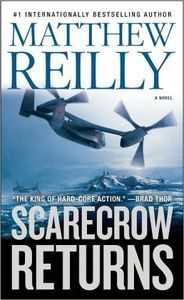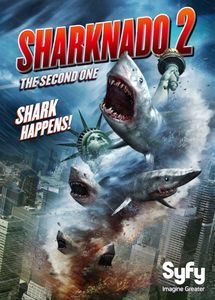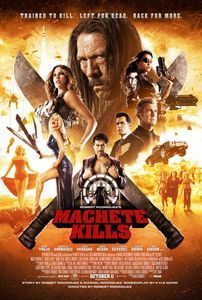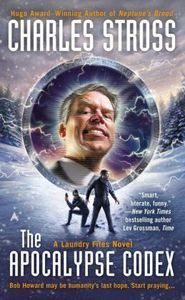Scarecrow Returns aka Scarecrow and the Army of Thieves, Matthew Reilly
Pocket, 2013 reprint of 2012 original, 496 pages, ISBN C$9.99 mmpb, ISBN 978-1-4165-7760-7
There are a few thousand reviews on this web site, and only a handful of them contain the word “escapism”. Being mainly a fan of genre fiction, I think the word is not only derogatory to most readers, but based on false premises: genre fiction at its best should be a way to understand the world a bit better by studying how people behave under extraordinary circumstances. But it’s also true that until recently, I simply did not understand the concept of escapism: Reading was a large part of my life and trying to escape from reading by reading led to unsolvable tautological conundrums.
Then life happened: I became a husband/father, took on more responsibilities, went on a reading semi-sabbatical and eventually realized that I hadn’t taken holidays in years, nor sat down to read a paperback from beginning to end in roughly as long. Taking a week off for summer holidays “doing nothing around the house”, I build my schedule around a number of key activities such as “reading a paperback sitting outside”. Stars aligned and I eventually found myself with some free time, a big jug of ice tea and favorable weather.
Of course, I picked a Matthew Reilly novel. Reilly, after all, is the very model of a dependable genre writer: He delivers more or less the same kind of experience to his readers, book after book after book. The Michael Bay of prose techno-thrillers, he builds his novels like videogames, high on action-movie set-pieces, a series of increasingly difficult levels, mapped-out settings and bare-bones characters largely distinguished by their call signs. Reilly may not be deep or literary, but he is clever and astonishing good at what he chooses to do: He’s a natural choice for anyone looking to reconnect with notions of escapism.
So it is that this novel returns to the character of Shane “Scarecrow” Shofield, indestructible hero of four previous high-tech action novels. This time, he happens to be up in the Arctic Circle just as a terrorist group takes over a Russian base and threatens the world with wholesale destruction. Grabbing on to a small motley group, he boldly heads toward more dangers and insane action sequences than you can count.
Readers of the series so far will be completely comfortable with this new instalment: High-tech weapons, large-scale geopolitical premises, nick-of-time escapes from certain death are all featured here, along with the usual in-book diagrams, in-prose exclamation points and usual bon mots from the characters. Reilly still manages to make me chuckle out loud at the absurdity of his action sequences, and he’s never too shy to tell you how to feel at any given moment. (i.e.; it’s not enough for the characters to swing heavy objects from cables in unlikely configuration: you will be told explicitly that “it was an incredible sight”) The more you know the series, the more amusing it is: at one point, a character in desperate circumstances asks herself “What would Scarecrow do?” The answer is to go for the most insane explosive alternative… and it works. Scarecrow Returns also comes back to the enclosed-environment settings of early Reilly novels (unlike the globe-spanning of his last few books), and actually nods heavily toward continuity by taking in account the psychological trauma suffered by its protagonist in previous novels.
None of this is meant as a recommendation for those who are not already familiar with Reilly’s brand of explosive fiction: It takes a special kind of reader to appreciate the relentless pacing, crude plot mechanics and slam-bang prose. Still, there’s respectability in consistency, and Scarecrow Returns is exactly what fans would be looking for in a new Reilly novel. It’s so over the top that it creates its own reality, sucking readers out of their usual lives. Escapism? Yes, please.













